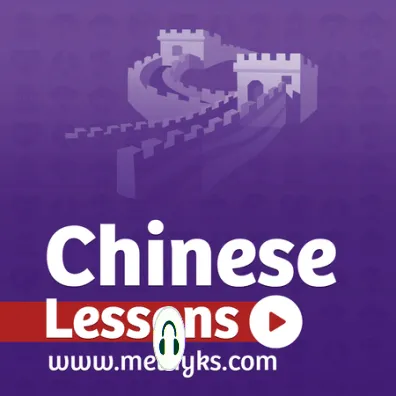The internet is now teeming with apps, programs, and websites designed to help beginner learners, advanced learners, and everyone in between learn Chinese online. This is a wonderful opportunity for Chinese learners, since the general availability of internet access renders learning Chinese easier and more accessible than ever before. This article will give you some pointers on finding the best way to learn Chinese online and recommend some resources to check out.
Determining the Best Way to Learn Chinese Online for You
Online resources for Chinese are all different and cater to different audiences. Important factors to consider when choosing the best way to learn Chinese online for yourself are: the main language skills it exercises, its style of instruction, the proficiency levels it targets, and its cost. This article will touch on all of these aspects.
Language skills:
While most resources help train all four language skills (reading, writing, listening, and speaking) at varying levels, they might focus on one or two of them more than the others. Some resources also specifically target Chinese vocabulary and grammar. You should try to ensure that you work on all six of these language skills.
Style of Instruction:
Some resources gamify their lessons to keep you entertained; some use pre-recorded videos for instruction; and some have you interacting with another person through video chat. All learners have different learning styles, and you should choose resources that can target the skills you need to work on while being engaging enough to keep you motivated to learn.
Proficiency Levels:
While most of the resources in this article are appropriately scaled for all skill levels, some are suitable only for students of certain levels. Make sure you’re challenging yourself enough and not too much.
Cost:
Cost is a very important consideration when choosing the best way to learn Mandarin Chinese online, and you should aim to weigh the affordability of an option against its helpfulness. Just because an option is pricier does not necessarily mean it’s the best option for you!
Summary of Resources to learn Chinese online
Below is a table listing the resources covered in this article as well as the proficiency levels they target. A in a column signifies that the resource in that row is appropriate for that level. For further details on each resource, scroll down for brief descriptions.
| Appropriate Proficiency Level | |||||
| Type of Resource | Name of Resource | Beginner (~HSK levels 1 & 2) | Intermediate (~HSK levels 3 & 4) | Advanced+ (~HSK levels 5 & 6 and beyond) | |
| Online Classes | italki | ||||
| LTL Mandarin School | |||||
| Apps | HelloChinese | ||||
| ChineseSkill | |||||
| Duolingo | |||||
| Domino Chinese | |||||
| Hack Chinese | |||||
| Resources for Specific Skills | Listening | ChineseClass101 | |||
| ChinesePod | |||||
| YouTube | |||||
| Reading | Du Chinese | ||||
| The Chairman’s Bao | |||||
| Speaking | Glossika | ||||
| Writing | Langcorrect | ||||
Proficiency Level Guide:
- Beginner (~HSK levels 1 & 2)
- Intermediate (~HSK levels 3 & 4)
- Advanced (~HSK levels 5,6, and beyond)
- All Levels (Resource contains content appropriate for every level)
Online Classes
- LTL Mandarin School (All Levels)
- iTalki (Intermediate & Advanced)
- That’s Mandarin Online Chinese Classes (All Levels)
- Lingo Bus – Lingo Bus is an online Chinese learning platform that focuses on children’s education ages 5 through 12.
Apps
- Domino Chinese (All Levels)
- Hack Chinese (All Levels)
- HelloChinese (Beginner)
- ChineseSkill (Beginner & Intermediate)
- Duolingo (Beginner & Intermediate)
Listening Resources
- ChineseClass101 (All Levels)
- ChinesePod (All Levels)
- YouTube (All Levels)
Reading Resources
- Du Chinese (All Levels)
- The Chairman’s Bao (All Levels)
Speaking Resources
- Glossika (Intermediate & Advanced)
Writing Resources
- Langcorrect (All Levels)
Online Courses
Online Chinese courses can get you in touch with a teacher or tutor for one-on-one or group lessons, typically through video chat. As learners of all levels can benefit from one-on-one help from a native speaker or expert in Chinese, online classes can be appropriate for learners of all proficiency levels. These are also your best bet for practicing speaking skills, since you can get conversational practice and direct feedback during your lessons.
On another note, it’s important to supplement even the best online Chinese course with self-study. While the valuable time you spend with a teacher can greatly accelerate your progress, you’ll still need to spend independent time on your studies to consolidate what you’ve learned and strengthen your knowledge base, particularly when it comes to vocabulary.
italki
italki is a platform for language learning that allows you to browse their available teachers and tutors to book one-on-one virtual language lessons. The style of teaching and content you’ll encounter will depend upon the teacher you’ve chosen and your own interests.
Teachers on italki range from professional teachers to fresh tutors, so their levels of expertise may vary. Since teachers and tutors on italki independently set their own hourly rates, costs also vary, but classes are generally pretty affordable. You can also book discounted trial sessions to find the teacher who’s the best fit for you.
LTL Mandarin School
LTL School offers Chinese courses both in person in China and online for virtual learners.
The online courses are “online flexi” courses or “online fixed” courses and can be either group or individual lessons. The “online flexi” courses allow you to book as well as cancel sessions with greater freedom than the “online fixed” courses allow. All teachers for LTL School are certified in language instruction, so you know you’re getting an experienced instructor.
In the category of “online fixed” courses, group classes are affordable and start at $173 for 16 hours of instruction over four weeks, while individual classes are pricier, starting at $634 for 25 lessons. For “flexi courses”, the packages for group classes start at $50/month, and those for one-on-one classes start at $163/month.
Apps
The Chinese learning apps in this section can introduce new learners to the Chinese language or help advanced learners keep on top of their game as they approach Chinese fluency. Conveniently, they all allow you to progress at your own pace.
HelloChinese
HelloChinese is a Mandarin-learning service for beginners. It allows learners to play through their lessons as fast or slow as they want through exercises and games.
HelloChinese’s app is free to download. For learners who’d like more content, Premium plans start at $8.99/month.
ChineseSkill
ChineseSkill is also an app that teaches Chinese through small lessons and games. ChineseSkill’s curriculum goes up to HSK4 and is appropriate for beginner and low-intermediate learners.
ChineseSkill is free, but it also has a premium subscription priced at $12.99/month, $79.99/year, or $399.99 as a one-time payment.
Duolingo
Duolingo also offers language courses with game-like instruction that users can navigate at their own speed. It currently offers 37 different language courses for English speakers.
Duolingo’s Chinese course gets learners through the content of HSK1 to HSK3 and also introduces them to level four content, so it’s appropriate for beginner and low-intermediate learners.
Duolingo is free to use but limits how many mistakes you can make as you go through its lessons. It also offers a “Duolingo Plus” subscription that costs $6.99/month and grants you unlimited mistakes and some other perks.
Domino Chinese
Domino Chinese offers videos, dialogs, flashcards, and a course book that gradually build upon students’ knowledge bases to guide them through progressively more advanced content. Students can reach up to HSK level 5 through Domino Chinese, and it is appropriate for beginner, intermediate, and low-advanced learners.
Domino Chinese’s subscription starts at $3/month and has further incremental options up to $12/month for further resources and features.
Hack Chinese
Hack Chinese is the best Chinese learning app to learn Chinese vocabulary online. It has premade vocabulary lists from textbooks, HSK exams, and other apps for you to study, and you can also add to your own vocabulary lists. Hack Chinese helps you retain all this information by efficiently structuring your reviews for you and making sure you make the most of your study time.
As the best app to learn Chinese characters, Hack Chinese can help you through HSK levels 1 to 6 and beyond, and is appropriate for beginner, intermediate, and advanced learners.
Hack Chinese costs $8/month for a year or $12/month for one month. You can start a 20-day free trial to test the platform here.
Online Resources for Specific Skills
In this section, we’ll take a look at online resources dedicated to honing specific skills in Chinese.
Listening Skills
With the internet, it’s easier than ever to hear Chinese spoken by native speakers in both instructional and real-life settings. To practice your listening comprehension skills, you should not only try out resources that match your proficiency level but also find topics that you enjoy hearing and learning about.
All of these resources are appropriate for beginner, intermediate, and advanced learners, as listening content can be easily scaled for all levels, from basic conversations to in-depth explorations of pop culture.
ChinesePod
ChinesePod focuses on Mandarin language podcasts while providing resources for language exercises, vocabulary, and pronunciation. Their program also offers audio lessons to listen to and video lessons to watch.
Access to ChinesePod starts at $14/month and offers a premium option at $29/month.
ChineseClass101
ChineseClass101 provides audio and video lessons in a range of topics for students to learn from. Dialogues are accompanied by line-by-line translations, vocabulary definitions, and grammar points to ensure you’re understanding and absorbing the lessons.
ChineseClass101’s Basic plan costs $8/month, while its Premium and Premium+ plans cost $25/month and $47/month, respectively.
YouTube
YouTube needs no introduction, but its resources for learning Chinese shouldn’t be underestimated, particularly when it comes to your listening skills.
Some channels that you can check out for Chinese learning are Xiaogua Chinese and Jen Tomski. If you enjoy sifting through YouTube content, you can also find your own new favorite Chinese-speaking YouTubers or pre-recorded courses to learn from.
Best of all, watching YouTube videos is free!
Reading Skills
Practicing reading Chinese can be a difficult and frustrating process when you have to look up every other character you encounter. Thankfully, these resources make reading Chinese easier than ever before with the help of technology.
Both of these resources are appropriate for beginner, intermediate, and advanced learners.
Du Chinese
Du Chinese is an app that facilitates the process of reading Chinese by showing English translations of Chinese words when you hover over them. The provided texts range from those appropriate for absolute beginners to those that can challenge advanced learners.
Du Chinese’s subscription starts at $11.99/month.
The Chairman’s Bao
The Chairman’s Bao makes news articles easier to digest for Chinese learners. In addition to categorizing articles rated by HSK levels, it offers audio recordings, a pop-up dictionary that lets you click on words, and help with grammar and vocabulary.
Access to The Chairman’s Bao starts at $10/month.
Speaking Skills
Speaking skills can be harder to target if you don’t have a teacher, tutor, or conversation partner to practice with. You can practice reading out loud or repeating what you hear in a recording, but it’ll be difficult to finesse your pronunciation habits without some feedback. Here’s one resource that can help you out.
Glossika
Glossika helps you remember key sentences spoken by native speakers. You can record yourself as you practice imitating them and then listen to the recordings to track your progress.
Because Glossika presents written and recorded sentences without much context, it will likely be too advanced for beginner learners. However, for intermediate and advanced learners, its Chinese course goes up to the C1 level according to the CEFR (Common European Framework of Reference for Languages).
Glossika’s subscription starts at $30/month.
Writing Skills
Getting your writing skills to where you want them to be can also be quite difficult without someone to correct your writing and give you tips. Here’s one resource that can help learners of all proficiency levels.
Langcorrect
Langcorrect is a site that allows you to submit writing to be corrected by other users. If you’d like, you can also participate in the community by correcting writing in languages you’re an expert in.
Langcorrect is community-driven and free.
Mix and Match: the Best Way to Learn Chinese Online
None of these resources is a complete one-stop shop for Chinese online learning. To make the most of any of them, you should take advantage of their differences and weave them into a combination of resources that will exercise all of your language skills while targeting the skills you have the most trouble with.
For example, a beginner looking to form a basic online curriculum for themself could first sign up for a beginner’s course through LTL Mandarin School to build a foundation in Chinese. While going through the course, they can supplement and strengthen their studies with both Hack Chinese for vocabulary and HelloChinese for general practice.
Intermediate and advanced learners should put some thought into which skills they’d like to target and how much money they’d like to invest in their education.
An advanced learner who is raring to go and has money to spare could sign up for one-on-one sessions with a teacher from LTL Mandarin School, work on their vocabulary with Hack Chinese, practice listening with ChinesePod, practice reading with Du Chinese, practice speaking with Glossika, and practice writing with Langcorrect. This could be an amazing way to level up your skills in Chinese—but the cost here really starts to add up.
Advanced learners who need a more economical option can pick and choose among these resources according to their own learning pathways or substitute any of them with other free resources they can find.
The best way to learn Chinese online is ultimately to make the resources out there work for you. You don’t have to subscribe to every app on the web. You just have to make sure that your learning is balanced and efficient and that you’re maintaining the Chinese skills you’ve worked so hard to acquire.




